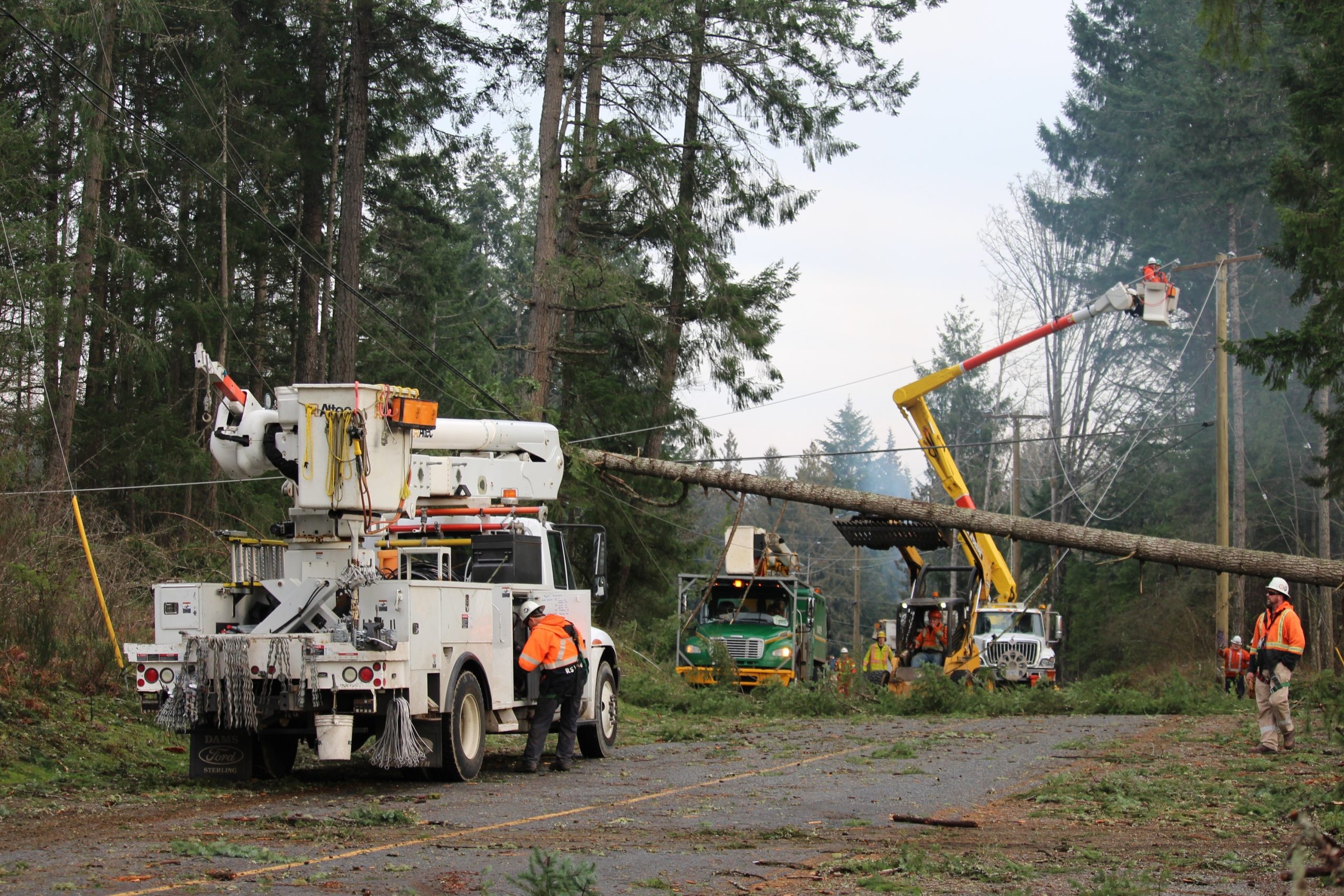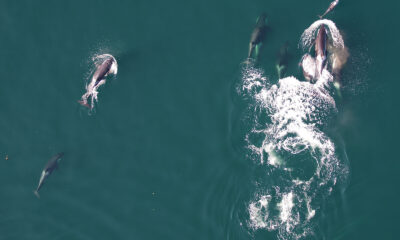Local News
Next storm looms as B.C. cleans up from bomb cyclone

Coastal B.C. is in for another weekend of wild weather.
A special weather statement has been issued for parts of the South Coast and wind warnings have been issued for Vancouver Island and the Sunshine Coast.
Environment and Climate Change Canada says an area of low pressure will deepen off the Washington coast Thursday night. The low is forecast to move northwards and approach Vancouver Island on Friday.
The agency says while the new storm is “not as intense” as Tuesday’s and Wednesday’s bomb cyclone that cut power to more than 300,000 BC Hydro customers, the high winds “may still cause damage and disruptions, and slow down cleanup efforts.” Current forecasts show it won’t affect Metro Vancouver that much, except possibly for parts of Richmond and Delta.
It’s the latest in a string of powerful fall storms, including an atmospheric river weather system in mid-October that caused flash flooding and dumped almost 300 millimetres of rain on parts of the province.
Armel Castellan, a warning preparedness meteorologist with Environment Canada, says the series of stormy weather is a product of a sustained upper trough, a low-pressure area high in the atmosphere.
He says that while such a pattern is “pretty typical” at this time of year, it doesn’t always last so long.
“We are dealing with an overall upper trough pattern offshore in the last two months, since mid to late September, and so that’s been a persistent stormy pattern, if you will,” Castellan said, adding that “sometimes we deal with it in days or a week, maybe two weeks.”
The bomb cyclone — a system triggered by a rapid drop in atmospheric pressure — brought winds as high as 170 km/h on Tuesday.
The system died down on Wednesday, but not before winds of more than 100 km/h continued to lash parts of the B.C. coast. Remote Sartine Island off northern Vancouver Island was hit by the most powerful gusts on Wednesday, reaching 113 km/h.
Castellan said that when an upper trough lasts two months or more, “it starts to become a fairly long-ingrained pattern, and then it starts to become a little bit long for the environment to handle.”
He said that could produce conditions like in 2021, when a trough from September to early December was marked by two bomb cyclones, a tornado in Vancouver, and devastating flooding caused by an atmospheric river that inundated the Sumas Prairie.
“It does bring us to more susceptibility because the soils are more saturated (and) yet another storm can become devastating. But in and of itself, we do see active periods of stormy pattern with an upper trough fairly often.”
Castellan said B.C. residents could expect some relief from “more of a cool and dry” weather pattern this weekend, “a stark change” from the weather over the past few days.
BC Hydro said it had restored power to more than 90 per cent of customers who lost electricity this week.
As of 3 p.m. Thursday, about 25,000 customers remained without power, mostly on Vancouver Island, out of the 320,000 customers affected by outages.
BC Hydro said crews have been “working around the clock” since Tuesday night, replacing dozens of downed power lines, poles, and other electrical equipment.
In the Interior, the office issued a snowfall warning for the Chilcotin region, with up to 10 centimetres expected until Friday morning.
— With files from Charles Brockman and Srushti Gangdev.












